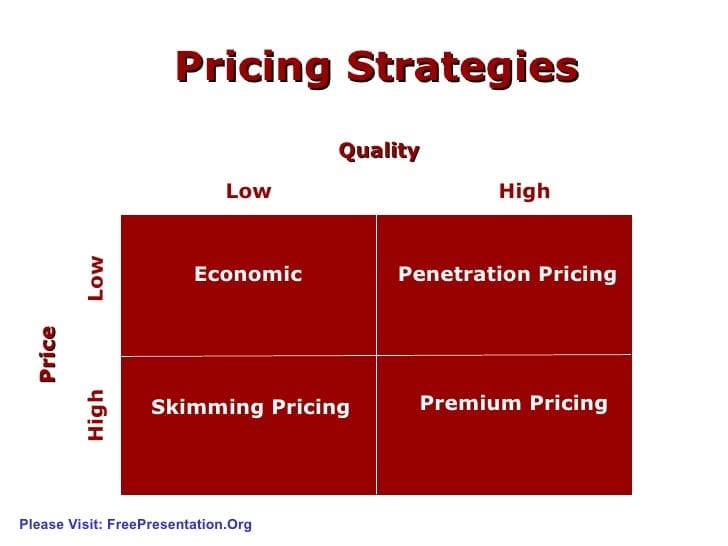
Master Effective Pricing Techniques to Take Full Advantage Of Revenue
In the ever-evolving landscape of commerce, understanding reliable prices strategies is vital for organizations aiming to take full advantage of earnings. A nuanced understanding of pricing psychology can substantially influence consumer habits and purchasing decisions.
Understanding Pricing Psychology
Comprehending pricing psychology is crucial for organizations aiming to enhance their prices strategies. This area examines exactly how customers view costs and how these assumptions affect their buying decisions. Trick ideas in pricing psychology consist of the anchoring effect, where the preliminary cost provided functions as a recommendation factor for consumers, and the concept of price level of sensitivity, which differs amongst various customer segments.
In addition, businesses can utilize the concept of perceived worth, where the viewed benefits of a service or product can justify a higher price factor. As an example, costs pricing can create an aura of exclusivity, drawing in customers that associate higher rates with premium top quality. On the various other hand, mental rates, such as establishing a price at $9.99 as opposed to $10, can substantially impact customer behavior by making rates show up extra appealing.
Furthermore, scarcity and urgency can improve the regarded value of products, prompting quicker purchasing choices. Recognizing these psychological triggers enables businesses to create prices techniques that not just drive sales yet also foster client commitment. Therefore, grasping pricing psychology is necessary for reliable prices strategy formulation, bring about enhanced success and market positioning.
Implementing Value-Based Prices

Next, segment your customers based on their willingness to pay and the worth they view. By doing so, you can customize offerings and prices techniques to align with various segments.
Continuously keep track of market problems and consumer comments to fine-tune your prices method over time. By executing value-based prices, organizations can boost productivity while fostering long-lasting customer loyalty.
Exploring Dynamic Prices Models
In today's quickly altering market landscape, vibrant rates models have actually emerged as an effective strategy for companies seeking to enhance earnings and react to variations sought after. These designs permit companies to readjust their costs in real-time based on numerous variables such as customer behavior, market trends, and stock levels. By leveraging information analytics and formulas, companies can determine ideal prices factors that optimize sales while staying competitive.
Dynamic pricing can take numerous types, including time-based rates, where costs fluctuate based upon time of day or period, and demand-based prices, which changes rates according to existing consumer need. This flexibility not just improves productivity but also enhances client fulfillment by supplying costs that show real-time market problems.
Applying vibrant rates needs a durable technological framework and a deep understanding of client segments. Transparent interaction about pricing modifications can assist mitigate customer dissatisfaction and foster trust, look at these guys inevitably leading to continual success in a competitive industry.
Studying Rival Prices
Keeping an eye on rival rates is vital for businesses intending to keep a competitive edge in their particular markets. By examining competitors' prices techniques, business can determine market patterns, recognize consumer choices, and adjust their pricing as necessary. This analysis entails celebration data on competitors' rates, advertising techniques, and product offerings to notify rates choices.
To efficiently examine rival rates, organizations should make use of different devices and methods, such as cost monitoring software, market study reports, and customer comments. This information can disclose exactly how competitors position their product or services, allowing businesses to distinguish their offerings or take on similar strategies to stay relevant.
Additionally, it is critical to categorize competitors into direct and indirect competitors. Straight competitors supply similar service or products, while indirect competitors may satisfy the same client demand with different services. Recognizing the nuances in between these teams will make it possible for companies to tailor their rates strategies better.
Eventually, continuous rival pricing analysis is vital for making enlightened prices choices. It enables companies to continue to be active in action to market shifts, ensuring they can confiscate possibilities and alleviate risks connected with pricing techniques.
Examining Pricing Performance
Recognizing exactly how rival prices affects market dynamics leads to an all-natural concentrate on examining rates efficiency within one's very own service. This analysis is important for identifying areas of stamina and possibilities for enhancement, ultimately enhancing productivity.

Additionally, carrying out routine pricing audits can expose disparities between expected and real efficiency. This includes contrasting pricing information throughout various sectors and channels to recognize variances and identify patterns. Additionally, incorporating consumer feedback can give insights into perceived worth versus real prices, ensuring alignment with market assumptions.
Last but not least, leveraging data analytics devices can promote deeper insights right into pricing performance, enabling more businesses to make data-driven modifications (Pricing Strategy). By continually assessing pricing performance, companies can adapt to market adjustments and maximize their approaches, making certain sustained productivity in a competitive landscape
Verdict
By leveraging rates psychology, businesses can boost viewed worth and tailor pricing to diverse customer segments. The fostering of value-based and dynamic blog prices designs facilitates real-time modifications based on need and consumer desire to pay.
Recognizing rates psychology is vital for services intending to enhance their pricing methods. Understanding these mental triggers allows services to formulate pricing approaches that not only drive sales yet additionally foster customer loyalty. Hence, mastering rates psychology is necessary for reliable pricing strategy formula, leading to improved success and market positioning.
By evaluating competitors' prices methods, firms can identify market trends, understand customer choices, and readjust their prices as necessary. By leveraging prices psychology, businesses can enhance viewed worth and tailor prices to varied consumer segments.
 Jennifer Grey Then & Now!
Jennifer Grey Then & Now! Shaun Weiss Then & Now!
Shaun Weiss Then & Now! Sydney Simpson Then & Now!
Sydney Simpson Then & Now! Shannon Elizabeth Then & Now!
Shannon Elizabeth Then & Now! Ryan Phillippe Then & Now!
Ryan Phillippe Then & Now!